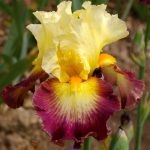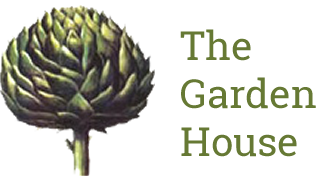Chelsea Flower Show favourites glorious Irises!
Posted:29 May 2010
Brighton-based designer Andy Sturgeon won both gold and Best in Show Garden at CFS with his contemporary gravel garden. A wonderful and adventurous garden in many respects the free-standing rusted steel structures framing stunning planting. Our eyes were particularly drawn to three large dramatic bowls of bronze coloured irises (Iris ‘Action Front’).
 We also loved the stunning display put on by Cayeux, the French Iris specialists. The logistics of exhibiting at Chelsea Flower Show were quite a challenge for Cayeux their nursery in France has no poly tunnels, all irises being grown in 55 acres of open fields. Thus the plants shown at Chelsea were grown in England by the nursery Iris of Sissinghurst, in pots from rhizomes sent over in August 2009 from the Cayeux fields in France. www.iris-cayeux.com
We also loved the stunning display put on by Cayeux, the French Iris specialists. The logistics of exhibiting at Chelsea Flower Show were quite a challenge for Cayeux their nursery in France has no poly tunnels, all irises being grown in 55 acres of open fields. Thus the plants shown at Chelsea were grown in England by the nursery Iris of Sissinghurst, in pots from rhizomes sent over in August 2009 from the Cayeux fields in France. www.iris-cayeux.com
Irises are well suited to dry, hot conditions. The following planting/care info is taken from the Cayeux website:
- When to plant: July to mid-October. It is important that the roots of newly planted Irises are well established before winter.
- Where to plant: In full sun Irises need sun at least two thirds of the day. The soil must have very good drainage. Plant either on a slope or in raised beds. No water should be allowed to stand in iris beds.
- Soil preparation: If your soil is heavy, coarse sand or humus may be added to improve drainage. Lime is also good to improve clay soils. The ideal pH is 7 (neutral), but irises are tolerant in this regard. Remove all the weeds before planting.
- Distance apart: Plant 30 to 40 cm apart. Closer planting will give an immediate effect, but the irises will need to be thinned often.
- Depth to plant: Irises must be planted so that the tops of the rhizomes are exposed and the roots are spread out facing downward in the soil. Just after planting, water to pack down the soil around the roots.
- Watering: Newly set plants need moisture to help their root system become established. Once established, irises do not need to be watered except in arid areas and it is always better to under-water than over-water. TOO MUCH WATER CAN INDUCE ROT.
- Dividing old clumps: Irises must be divided every 3 to 5 years before they become overcrowded and begin to flower less. Thin by removing the old divisions at the centre of the clumps and leaving new growth in the ground. Alternatively, dig up the entire clump and remove and replant the big new rhizomes.
- Feeding: Depends on your soil type but bone meal, superphosphate or 5-10-15, or 6-8-12 are effective. Feed once in early spring and then one month after flowering. AVOID USING FERTILIZERS HIGH IN NITROGEN, IT ENCOURAGES ROT PROBLEMS.
- About the foliage: During the growing season healthy green leaves should be left undisturbed, but diseased or brown leaves must be removed. In the late autumn, trim off old dying foliage and cut the leaves back to about 15 cm. Flower stems should be cut off close to the ground after blooming.

